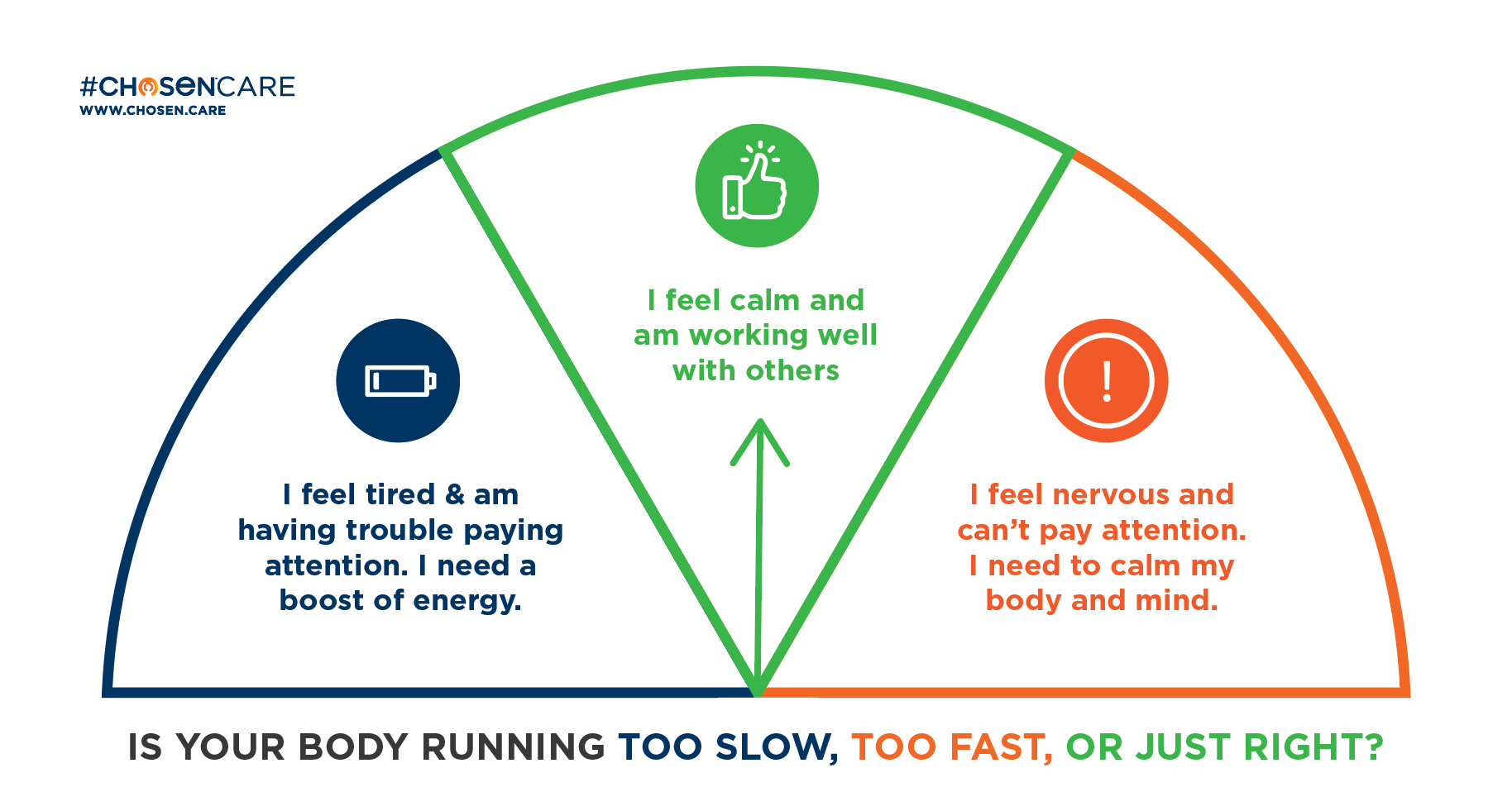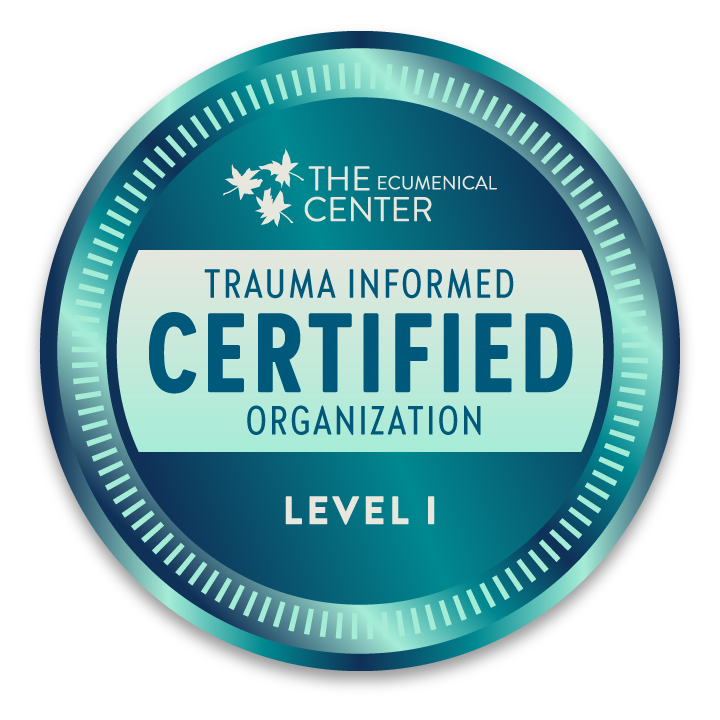Some mornings my youngest son goes through two or three pairs of socks before he finds a pair that does not bug him — he may have a couple sensory processing disorder issues. This used to be more of an issue when he could not communicate his needs appropriately and socks ended up thrown across the room and a meltdown would ensue. My husband and I have worked with him and helped him to use his words to communicate his needs. He is four so we find ourselves doing a lot of co-regulating with him still. Just the other day he said to me, “Mommy may I please have different socks, these are really itchy,” and I, of course, told him that I would find more socks, and I thanked him for using his words and asking so nicely! I was so proud of him for recognizing that he had a problem and calmly proposing a solution. To be honest though, this is far from where we began and it took lots of re-dos for my son to finally get to this point of asking calmly for what he needed and to be able to use some self regulation when he became frustrated. It still doesn’t happen this way all of the time, but there are times when I catch him taking deep breaths when he is getting upset and I know that he is learning skills to self-regulate.
Dr. Karyn Purvis and Dr. David Cross suggest that a child learns best how to self-regulate when adults scaffold, or provide the appropriate level of help that the child needs. (Purvis, K. Cross, Dr. R., Hurst, J. R., & Milton, H. [2013]. p. 34, Trust-Based Relational Intervention: TBRI Empowering Principles [Instructor Workbook]) For example, at first children need lots of help and guidance to learn self regulation, but as they learn to recognize signs and implement coping skills they will need less and less help, until they have completely mastered it and can do it on their own. It’s up to the parents to see the progress that the child has made and adjust the level of support given accordingly.
Toddlers, preschoolers, and children from “hard places” all rely on parents to help them regulate themselves until they can learn the tools to self-regulate. For children to learn self-regulating skills, parents have to first help children recognize the signs that they are becoming dysregulated and then teach them strategies to get back on track. For example, if a child is hungry and is having a meltdown he may not realize that he is hungry or understand that getting a snack would help him regulate. It’s important to provide your child with concrete examples of things to do when he or she is feeling dysregulated and remind him often. In the midst of a meltdown a child will not be the most receptive to calming techniques; effective learning is done best when the child is calm and can be later reinforced in the moment.
TBRI TuesdayDeep breathing is a great technique for a child to master to help regulate his body and move out the fight or flight (sympathetic nervous system) into relaxation and receptivity (parasympathetic nervous system). When teaching children how to self-regulate it’s important to help children be attuned to their breathing and to monitor when their breathing starts to quicken and give them techniques to calm their breathing and heart rate. To teach breathing techniques it might be helpful to have the child cup their hands and visualize that they are blowing on a bowl of soup or pretend like their blowing bubbles or blowing out the candles on a birthday cake. Another strategy is to count four breaths in, hold for four breaths then breathe out for four breaths. Blowing a pinwheel is another way to make deep breathing fun for kids. Pinwheels are colorful and such a fun toy and can be alluring for a child to make it spin by using deep breathing techniques by steadily blowing air out to make it spin. You can have a child pretend to blow bubbles or if you need a fun distraction or want to practice actually blow bubbles. Practice these deep breathing techniques when the child is calm so that it is easier for the child to use them when they need it.
The Alert Program® designed by Therapy Works Inc. has designed another way for teaching self-regulation by teaching children to use a handmade paper plate or a “thermometer” to “check their engines.” Therapy Works explains that the analogy is that the child’s body is an engine and they learn how to monitor whether their engine is running “too high (red), too low (blue), or just right (green).” They explain that this can be changed depending on what motivates the child, for example, you could use animals and have a picture of a cheetah for high, a turtle for low or a bear for just right. This is a great visual tool for children to begin to understand how to regulate their body.
Trust-Based Relational Intervention (TBRI®) reminds us that children who are adopted from “hard places” have not formed appropriate ways to self-regulate and function based on the survival skills they have learned in the past. These survival skills may consist of self-soothing techniques like rocking, nail biting, head pounding, or thumb sucking. As a parent of a child from a hard place it is important to help your child replace these old habits with new ones; for example, you can be the one that provides the comfort by holding him and rocking him to soothe him when he is upset. Weighted blankets can also provide comfort to a child when he is distressed. Sometimes in order to calm down it is helpful to take a break and retreat to a quiet place to relax. Instead of putting a child in time-out during meltdowns we prefer using time-ins, which still provides a safe place for a child to calm down but the parent stays close and the child is not isolated.
It takes time to learn what will comfort your child, you’re the expert on your child and it may take some detective work on your part. You can start by trying or adapting the ways you deal with stress to see if they are effective for your child. For example, if you like going for a walk or doing yoga when you are stressed you could them with your child to see if it helps. Make sure to modeling appropriate self-regulating techniques, practice, and talk about them regularly with your child. TBRI provides many more ways to teach your child self-regulation, let us know if you are interested in learning more.













